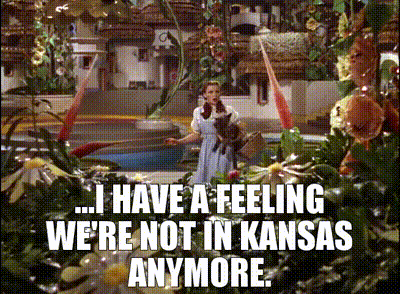I did not see that one coming
I did not see that one coming…

I was toiling away on a Pathways call (group working to change CAISO governance for a bigger market) when a friend texted me about a decision in the DC Circuit Court. I was inclined to ignore it, until I saw that it concerned the FERC decision on how to handle bids that exceeded WECC's “soft offer” cap of $1,000/MWh during a stressful few days in late August and early September 2020.
I have a long history with the WECC Soft Offer cap. I was on staff at FERC back in 2001 and had overseen the staff’s first investigation into the 2000-01 Western Power Crisis. A key challenge in dealing with that crisis was the price cap associated with internal CAISO transactions, but none for imports. As a traditional “net-importer” in those days, the lack of a price cap in the adjoining West created a huge incentive for 1) load in CAISO to not bid in the day-ahead market for internal CAISO resources and 2) for some to take power outside of CAISO to then reinsert into CAISO since imports were not subject to price caps.
Since CAISO had taken the unusual step in the summer of 2000 to ration scarcity by lowering its own cap from $1,000/MWh to $500/MWh the incongruity of having no cap in the area around CAISO needed to be addressed. So began the WECC Soft Offer Cap of $1,000/MWh in 2002. Any bids beyond that would have to be filed at FERC and reviewed for possible refunds.
But, at the time, this “soft offer cap” was seen as a temporary measure. The West was normally not as short resources, as hydro was plentiful and normally predictable. The Region also had significant thermal resources and California was about to embark on a robust spree of new, efficient combined cycle generation. Additionally, it was believed that an RTO would grow up around CAISO which would allow for a harmonization of market rules.
While the integration of the Western market may now be within reach, the West developed enough resources for a period of more than 15 years. Consequently, the market was able to adequately meet regional demand even in poor hydro years. Indeed, the WECC Soft Offer cap was not meaningfully broached until August of 2020. Indeed, unfamiliarity with the WECC Soft Offer Cap caused a few in the market to completely overlook it when in August 2020, the market led to bids well above $1,000/MWh.
I’ve a feeling that we’re not in Kansas anymore…
But the Western market looks vastly different now than it did back in the early 2000s. First, market dynamics and the state policies in several states have led to the retirement of many thermal resources. Second, demand has grown much faster than predicted. Third, hydropower has been less predictable than in past years owing to several years of draught. Fourth, variable resources made it more attractive to buy and sell power from neighboring areas which led to the development of the CAISO’s Energy Imbalance Market (EIM) which now covers about 80% of the WECC.
By 2020 these factors coalesced into a market that was “tighter” than any other region and which relied on more transfers of power across the region without the benefit of a regional network market. Instead, it functioned with a mix of nodal pricing under CAISO tariff and traditional (and inefficient) contract path transmission. FERC Order 831 – issued to allow for bidding up to $2,000/MWh in RTO markets to assist price formation during periods of scarcity – was in place in CAISO, but the $1,000/MWh WECC Soft Offer cap remained in place in the surrounding West.
There are other factors that make this picture more complicated, such as the effect of the “net peak” when solar is coming off the system, but load remains high. The precarious late August and September timeframe when hydro resources are lower, but heat remains persistent and maintenance issues often emerge. Finally, extended periods of heat have become prevalent over larger areas of the West that now rely on each other.
Follow the yellow brick road…
In my mind, the FERC made a couple of mistakes in subjecting some of the bids from the August – September 2020 heat wave to refund. The Commission used the prices for the affected days that appeared on the ICE regional indexes as the acceptable bids. This is problematic in my mind because the ICE bids reflect the mean of bilateral bids and are not like the transparent marginal cost of a market like CAISO or other RTOs.
However, the big mistake that FERC made which caused the DC Circuit to agree with market participants, was that abrogating the bids above the relevant ICE index and subjecting them to refund, it asserted it did not need to subject those bids to a “public interest” review as required under the Mobile-Sierra doctrine. This doctrine asserts that contracts entered into by willing buyers and sellers cannot be abrogated unless allowing them would injure the “public interest.”
What the Commission will subsequently do with these bids is open to speculation. Naturally, regulators dislike high prices, much less rationalizing them. But the way forward ( the yellow brick road) will lie in the market integration of the region, so that market rules can be harmonized. It is against all logic that areas of a region that rely upon each other for resources should be subjected to different pricing rules. While harmonization should happen with new day-ahead markets, the Soft Offer cap should be eliminated now. This should add urgency to market integration, serve reliability and eliminate disincentives to move power across the region.
Click your heels twice and say “there’s no place like home…”